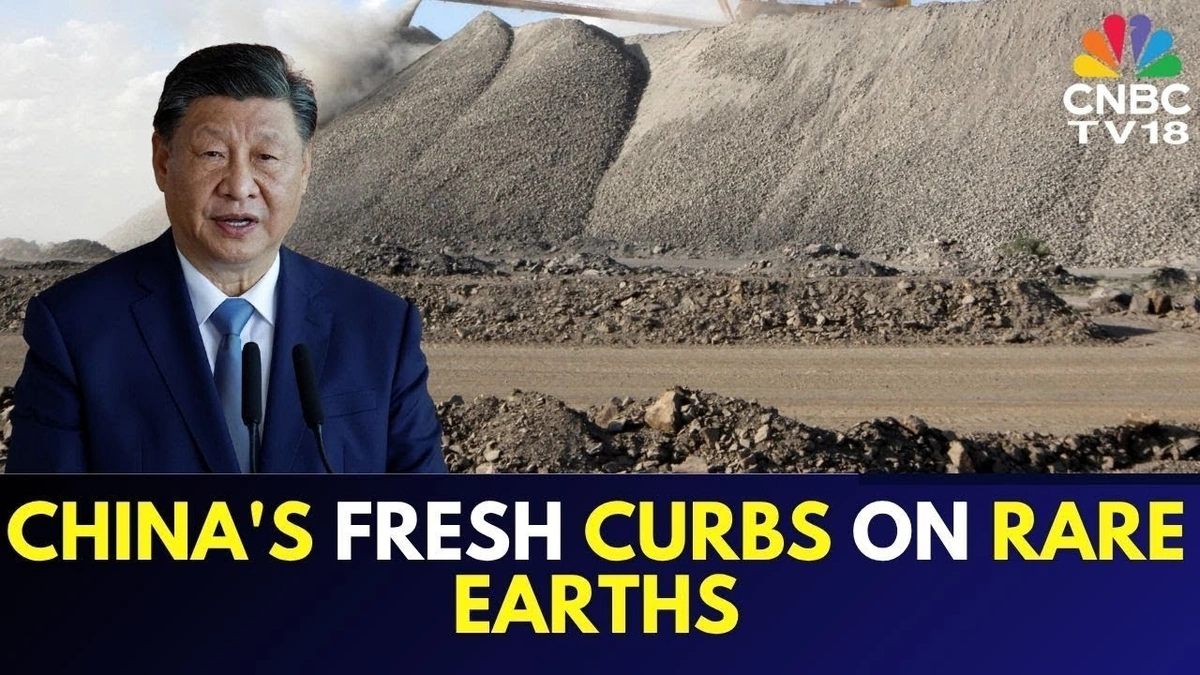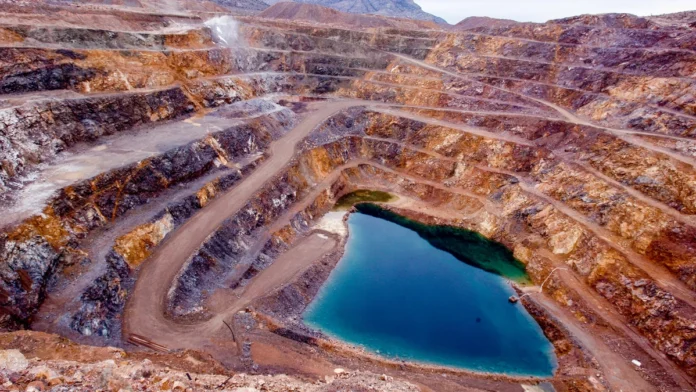Alright, let’s dive deep into something that might sound like it’s only for policy wonks, but trust me, it affects everything from your phone to national security: China’s dominance in rare earth minerals . The Center for Strategic and International Studies (CSIS)’s very own Dr. Baskaran recently weighed in on this, and it’s juicier than any geopolitical thriller.
Why China’s Rare Earth Stranglehold Matters to You (and India!)

So, what’s the big deal? Rare earth elements (REEs) are essential for a mind-boggling array of modern technologies. We’re talking smartphones, electric vehicles, wind turbines, and even advanced military equipment. China currently controls a significant portion of the global supply chain, from mining to processing. According to data from the U.S. Geological Survey, China accounted for 70% of rare earth production in 2023 (USGS) . Here’s the thing: this concentration of power creates a potential choke point. Imagine if China decided to restrict exports? That’s where the “standoff” comes in.
For India, this is particularly relevant. India is pushing hard on its own manufacturing and technology sectors, and access to these materials is absolutely crucial. We need to understand the vulnerabilities and what strategies India can adopt to secure its supply chains. But, before we go there, let’s understand the geopolitical implications .
Decoding the Baskaran Analysis | What’s Really Going On?
Baskaran’s analysis likely delves into several key areas. First, the drivers behind China’s strategy. Is it purely economic, or are there strategic motivations at play? Are they using their rare earth dominance as a tool in broader trade negotiations or geopolitical maneuvering? The answer, most likely, is a bit of both.
Second, the vulnerabilities of other countries. How dependent are the US, Europe, and, yes, India on Chinese REEs? What alternative sources exist, and what are the barriers to accessing them? It isn’t just about finding the minerals; it’s about the complex and expensive processing needed to make them usable. This is where countries like India have to think strategically. A common mistake I see people make is not considering the cost-benefit analysis of developing indigenous resources versus diversifying supply chains.
Third, the potential responses. What can countries do to mitigate the risks? This includes diversifying supply chains, investing in domestic mining and processing capabilities, developing alternative materials, and building strategic stockpiles. Here’s the thing , it’s not just about digging more stuff out of the ground. It’s about innovation, recycling, and finding smarter ways to use these resources. According to a report by the World Bank, enhancing recycling infrastructure can significantly reduce dependency on primary mining (World Bank) .
India’s Rare Earth Challenge | A Path Forward
So, what does this mean for India? Well, let’s be honest , India has a lot of catching up to do. India possesses some rare earth mineral reserves, but the extraction and processing infrastructure is limited. We need a multi-pronged approach:
1. Strategic Partnerships: Forging alliances with countries like Australia, the US, and Japan, who are also looking to diversify their supply chains. This isn’t just about buying minerals; it’s about sharing technology, expertise, and investment.
2. Domestic Investment: Boosting investment in research and development to develop indigenous mining and processing capabilities. The one thing you absolutely must double-check on is environmental compliance when developing these capabilities. Sustainable extraction is a must.
3. Recycling and Innovation: Promoting the recycling of REEs from electronic waste and investing in the development of alternative materials. What fascinates me is how little attention recycling gets in the broader conversation.
4. Building Stockpiles: Creating a strategic reserve of critical minerals to cushion against potential supply disruptions. ustrendsnow.com
The truth is , this isn’t just about economics or technology; it’s about national security. A secure supply of rare earth elements is essential for India to achieve its ambitions in manufacturing, technology, and defense. And it’s a challenge that demands a coordinated and strategic response. And , it’s essential for India to reduce its reliance on China.
Consider the impact on the Indian economy . Imagine a scenario where electric vehicle production is stalled due to a shortage of key components. This is not a hypothetical; it’s a real risk that we need to address proactively.
Here’s what I think : this is a wake-up call. We need to stop thinking of this as just another trade issue and start treating it as a matter of strategic importance. The future of India’s economy and security may well depend on it. It initially thought this was straightforward, but then I realized the complexity of the supply chain issues.
And , understanding the intricacies of the global supply chain is paramount in addressing this challenge. ustrendsnow.com
The Global Rare Earth Market Dynamics
Understanding the global landscape is crucial for India’s strategy. Here are some key aspects of the market:
- Market Concentration: China’s dominance has led to a highly concentrated market, making other countries vulnerable.
- Price Volatility: Rare earth prices can be highly volatile, influenced by geopolitical events and supply disruptions. This volatility can impact manufacturing costs and investment decisions.
- Environmental Concerns: Rare earth mining and processing can have significant environmental impacts, requiring careful regulation and sustainable practices.
- Technological Advancements: Innovation in mining, processing, and recycling technologies is crucial for diversifying supply and reducing environmental impacts.
Let me rephrase that for clarity : the global rare earth market is complex and dynamic, requiring a strategic and informed approach.
The Future of Rare Earths | Innovation and Sustainability
Looking ahead, the future of the rare earths industry will be shaped by innovation and sustainability. Here are some key trends to watch:
- Advanced Materials: Research into alternative materials that can replace or reduce the need for rare earths.
- Circular Economy: Implementing circular economy principles to maximize the recycling and reuse of rare earths.
- Sustainable Mining: Developing more environmentally friendly mining and processing techniques.
- Geopolitical Shifts: Monitoring and adapting to shifts in global power dynamics that could impact the rare earth supply chain.
Alright, let’s wrap this up . The rare earth standoff is not just a geopolitical game; it’s a challenge that demands innovation, sustainability, and strategic thinking.
FAQ
What exactly are rare earth elements?
They’re a set of 17 metallic elements vital for many technologies.
Why is China so dominant in rare earths?
They have large reserves, lower labor costs, and less stringent environmental regulations historically.
What can India do to secure its rare earth supply?
Diversify supply chains, invest in domestic mining, and promote recycling.
Are there alternatives to rare earth minerals?
Research is ongoing, but replacements are difficult for many applications.
What if I want to learn more about India’s rare earth strategy?
Keep an eye on government reports and industry publications.




